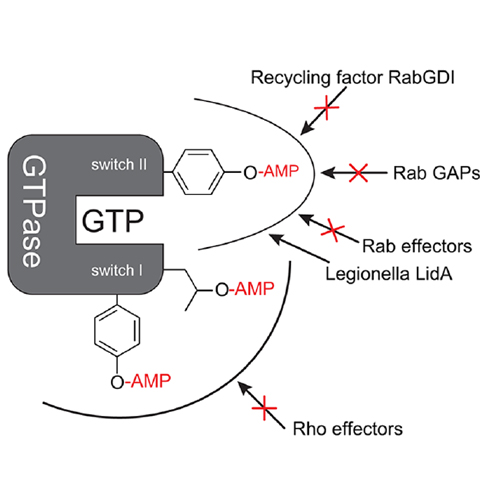Molecular Perspectives on Protein Adenylylation
08-Dec-2014
ACS Chem. Biol., 2014, DOI: 10.1021/cb500854e, 10 (1), pp 12–21 published on 08.12.2014
ACS Chem. Biol,.online article
ACS Chem. Biol,.online article
In the cell, proteins are frequently modified covalently at specific amino acids with post-translational modifications, leading to a diversification of protein functions and activities. Since the introduction of high-resolution mass spectrometry, new post-translational modifications are constantly being discovered. One particular modification is the adenylylation of mammalian proteins. In adenylylation, adenosine triphosphate (ATP) is utilized to attach an adenosine monophosphate at protein threonine or tyrosine residues via a phosphodiester linkage. Adenylylation is particularly interesting in the context of infections by bacterial pathogens during which mammalian proteins are manipulated through AMP attachment via secreted bacterial factors. In this review, we summarize the role and regulation of enzymatic adenylylation and the mechanisms of catalysis. We also refer to recent methods for the detection of adenylylated proteins by modification-specific antibodies, ATP analogues equipped with chemical handles, and mass spectrometry approaches. Additionally, we review screening approaches for inhibiting adenylylation and briefly discuss related modifications such as phosphocholination and phosphorylation.











